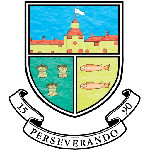Design Technology and Engineering
| Mr M Lonsdale (Head of Team) | mlonsdale@conyers.org.uk | Mr D Jones | djones@conyers.org.uk |
| Mrs A Nicol | anicol@conyers.org.uk | Mrs C Jahangiry | cjahangiry@conyers.org.uk |
| Mr D Youngs | dyoungs@conyers.org.uk | Mrs J Wright | jwright@conyers.org.uk |
Key Stage 3 Curriculum Map
Curriculum Intent
Aim to give a broad and balanced experience of Technology through practical, theory, drawing and CAD based work. To develop and refine students’ understanding in technology based knowledge and skills, ready for the new rigors of KS4. To allow students to express creativity through design and making. To experience some form of practical work every lesson.
Key Knowledge and Skills
Year 7
Students will undertake a series of creative projects that will aim to introduce and inspire their enthusiasm for DT. Year 7 will aim to provide the essential foundations that can be built upon in future KS3 years. We will introduce students to Woods; the workshop, tools, machines and joints. Metals; forming, casting, shaping and wasting. Electronics; basic circuit boards and components. CAD; 2D and 3D. Graphics; rendering, design ideas and modelling. Programming; microcontrollers. All of which are built into fun and useful products the students take home.
Year 8
Students will undertake a series of creative projects that will aim to use and build upon last years knowledge and skills, and inspire their enthusiasm for DT. Year 8 will aim to provide the essential next steps that can be built upon in future KS3 years. We will introduce students to advanced wood working; advance joints and finishes. Metals; Creating intricate shapes and forming. Electronics; advanced circuit boards and components. CAD; 2D and 3D. CAM; Laser cutting and 3D printing. All of which are built into fun and useful products the students take home.
Year 9
Students will undertake a series of creative projects that will aim to build up last years knowledge and skills, and inspire their enthusiasm for DT. Year 9 will aim to provide the essential next steps that set students up for KS4 (Materials, Engineering or Textiles). We will introduce students to Woods; high quality product manufacture and finishing. Metals; forming, casting, shaping and wasting. CAD; 2D and 3D. CAM; 3D printing. Electronics; advanced circuit boards and components. Programming; microcontrollers. All of which are built into fun and useful products the students take home.
Sequence Discussion
Year 7
Students begin with the Product Design project – this starts them with the basics in wood and electronics. They then move into basics of metals, graphic design, programming and CAD in term 2 and 3. This then ensures students have a solid foundation for all areas of technology moving forward.
Year 8
Students will build on knowledge from Year 7. In wood work they will move into advanced joints, building on last years skills. Metal work moves from forming simple shapes by hand to creating complex shapes with machines. Electronics builds on last years circuit with much more detail and care needed.
Year 9
Students choose which Technology to do in Year 9. This will allow them to build on skills from Year 7 and 8 in their chosen area. Using wood work skills they are to create a complex product and finish to a high standard, this focuses on precision. In metal work they build on the forming of sheet metal to create a complex clock project. In Textiles they create reusable product made from upcycled materials, with a large focus on the environment.
Year 7
Half Term 1
Project 1: Product Design
Make a working electronic circuit, timber box and graphic design cover.
Half Term 2
Project 1: Product Design
Make a working electronic circuit, timber box and graphic design cover.
Half Term 3
Project 2: Metals
Make an aluminium coat hook with a plywood base.
Half Term 4
Project 2: Metals
Make an aluminium coat hook with a plywood base.
Half Term 5
Project 3: Graphics
Create packaging for a product, produce a mould in 2D CAD and cast Pewter.
Half Term 6
Project 3: Graphics
Create packaging for a product, produce a mould in 2D CAD and cast Pewter.
Year 8
Half Term 1
Project 4: Resistant Materials
Make a working mirror using mortise and tenon joints.
Half Term 2
Project 4: Resistant Materials
Make a working mirror using mortise and tenon joints.
Half Term 3
Project 5: Engineering
Make a working speaker system.
Half Term 4
Project 5: Engineering
Make a working speaker system.
Half Term 5
Project 6: Engineering
Making a working clock from sheet metals.
Half Term 6
Project 6: Engineering
Making a working clock from sheet metals.
Year 9
Half Term 1
Project 7: Design Technology
Make a working jewellery/watch box from hardwood.
Half Term 2
Project 7: Design Technology
Make a working jewellery/watch box from hardwood.
Half Term 3
Project 8: Textiles
Using upcycling to create a tote bag.
Half Term 4
Project 9: Engineering
Students will design and make a brass box.
Half Term 5
Project 9: Engineering
Students will design and make a brass box.
Half Term 6
Project 10: Engineering
Students will design and make a lantern from sheet metals.

